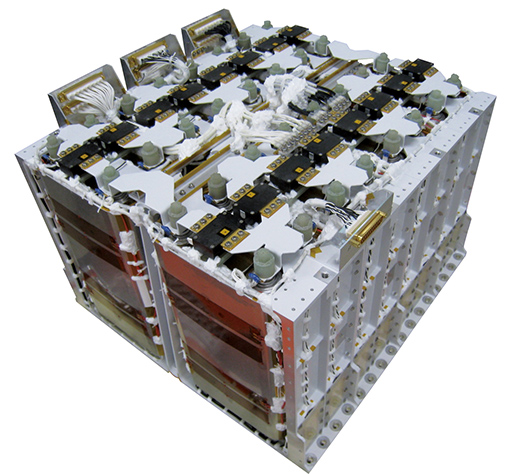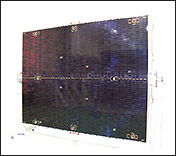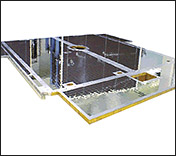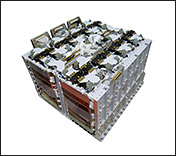Satellite ComponentsBUS Equipment
Solar Array Panel (SAP) and Solar Array Wing
Solar array panels generate electric power for satellite operation. Compared to products for terrestrial use, these panels are lighter, more efficient, have a longer service life, and are more resistant to cosmic radiation.
Solar Array Panel
- It holds 40% of global market share
- Long-term purchase agreement with major satellite manufacturers in US and Europe
- No failure reported over 1000 panels in orbit since the first flight in 1997
Solar Array Wing
- Flight heritage of Solar Array Wings for nine DS2000* satellites
- No failure reported in orbit since the first flight in 2003
* DS2000: MELCO satellite standard bus
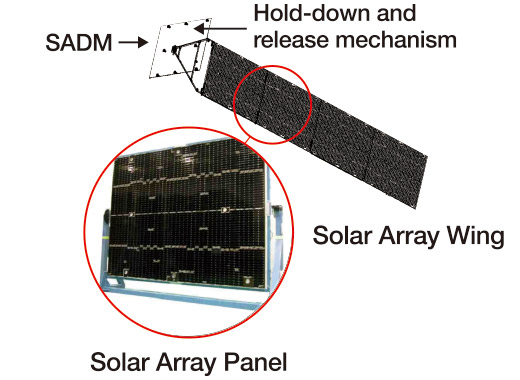
Structural Panel & Heat Pipe Panel
Heat pipe panels diffuse heat generated in satellite by transferring it to components that dissipate it. Their function is to maintain a steady temperature inside the satellite.
Aluminum Panels CFRP (*) Panels
- Over 100 satellites launched including the global operator's programs such as Intelsat, Eutelsat and SES equipped with MELCO structural panels
- Holds more than 30% of global market share
- Long-Term Purchase Agreement with major satellite manufacturer in US
- No failure reported ever over 9000 panels in orbit
Deployable Radiator
- Flight heritage of deployable radiator for Japanese domestic satellite achieved in 2006
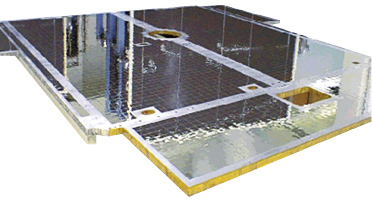
Lithium-Ion Batteries (LIB)
Lithium-ion batteries store electric power generated by the solar array panels. They weigh roughly half as much as conventional batteries with the same capacity.
- Since 2003, over 100 batteries and 1200 cells flown to space for the global operator's programs such as Intelsat, Eutelsat and SES
- Holds more than 35% of global market share
- Long-Term Purchase Agreement with major satellite manufacturers in US and Europe
- No failure reported on all of batteries and cells in orbit with accumulated operation period of more than 100 years-satellites in space
- High energy density, low mass and small volume
